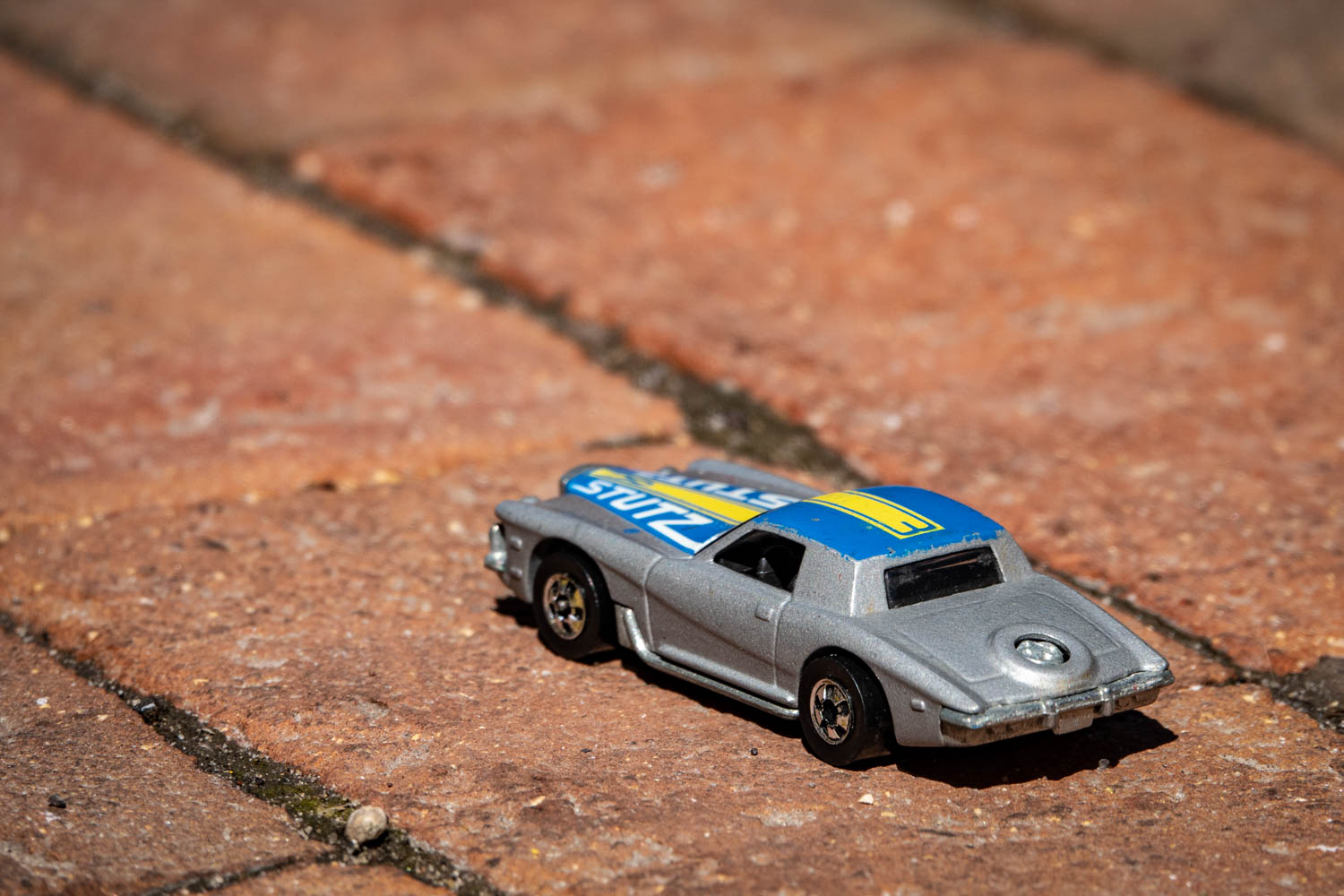Why Stutz? Why not Stutz? Longtime Hot Wheels design chief explains
I grew up as a Matchbox kid, before Hot Wheels came along. The first diecast car I remember owning was a Lesney Matchbox 1960s Ford GT, white with blue racing stripes and #6 on the hood—perfect for a kid who also loved baseball, since #6 belonged to Detroit Tigers star and future Hall of Famer Al Kaline.
Growing up in a large family, I received plenty of those little cars, since they were relatively cheap and we weren’t exactly flush with cash. But when Hot Wheels arrived in 1968, Matchbox cars were, well, no match. Hot Wheels looked cool, their wheels rolled more smoothly, and they were available with race tracks and loop-de-loops and superchargers, which were essentially battery-powered spinning wheels that would propel the cars along the track without needing a nudge from me. (Plus, Matchbox came out with a silver-blue Honda motorcycle and yellow trailer that I just couldn’t make sense of. The freaking bike was taller than the car towing it, no matter which one I chose, and that just didn’t sit right with my 6-year-old imagination. It has bothered me for decades, obviously. But I digress.)
Hot Wheels consumed my imagination and my piggy bank (when it wasn’t baseball season), and soon I owned dozens in all styles and colors. I never questioned how or why Mattel selected the cars that it did. I just played with them. A lot. However, when my boss recently came across a 1979–80 Stutz Blackhawk Hot Wheels car—silver with blue and yellow trim, just like the one he had as a kid—his time-traveling joy was rudely interrupted by a burning question: Why in the world would Mattel produce a diecast car that wasn’t absolutely certain to be a big seller?
After more than a decade in the diecast business, surely Mattel had determined a winning formula. So why roll the dice on a Stutz, based on Virgil Exner’s early-1970s design? I volunteered to find out. (The boss likes when I do that.)
Armed with precious few details and the name of the diecast car’s designer, Larry Wood, I reached out to Scott Shaffstall, Mattel Senior PR Manager, Vehicles and Licensing, and asked for help. Shaffstall connected me with Wood, the longtime Hot Wheels Chief Designer, and Wood’s reasoning for the Stutz was simple.
“As the solo designer from the ’70s through the ’90s, it was a fairly one-sided conversation,” Wood jokes. “I was always looking for something different, because at 1:64 scale, many cars begin to look similar. That’s why there are some very unique cars in the line. Of course, I like classic cars, and at that time, this was an attempt to get into that market with a reliable chassis. The diecast version seemed to hook a lot of kids.”
Brandon Vetuskey, Hot Wheels Designer at Mattel, was one of them.
“I had a silver Stutz as a kid, as did several kids in my neighborhood, and I liked it,” Vetuskey says. “It was a unique-looking Hot Wheels, and in my opinion, looks fantastic in 1:64 scale.”
Vetuskey reasons that Exner’s best work was the 1957–60 line of Chrysler cars (Imperial, Chrysler, Dodge, Desoto, and Plymouth) known as “forward look” cars. “They’re undeniably the best-looking cars to come out of Detroit in the 1950s,” Vetuskey says.
Wood’s small-scale Stutz proved to be a winner. According to Tomart’s Price Guide to Hot Wheels Collectibles, the Hot Wheels Blackhawk had 19 variants. It was produced in both Hong Kong and Malaysia, and it was last offered in the “Final Run” series 20 years ago, in 1999.
Exner’s actual, adult-size Stutz Bearcat coupe also had a long run; it was produced from 1970–87 by Stutz Motor Car of America. The company also produced a convertible from 1979–95. Elvis Presley bought the first Bearcat and eventually purchased three more. Celebrity owners included Lucille Ball, Frank Sinatra, Dean Martin, Sammy Davis Jr., Barry White, and Evel Knievel.
A 1979 Stutz Bearcat in #2 (Excellent) condition has an average value of $31,300, but you can score a 1979 Hot Wheels Bearcat on eBay for $5–$20, depending on condition. I bought one. For the boss, of course. One of these days, I might give it to him.









